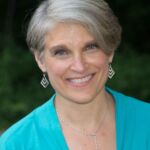Moisture Defects in Buildings – A Sick Building Epidemic
Tuesday May 6, 11:15am – 12:15pm
Centennial D
Poor air quality caused by water damage and mold is contributing to increasing health burdens on occupants of buildings of every type, construction and age..including new construction. Understanding and applying building science fundamentals along with considerations uniquely related to region, site, structure type, materials and construction coordination is the key to successful building solutions that will be durable and supportive of occupant wellness over time. Bulk water, condensation, pressure differentials, capillary action, construction processes and even occupant activities contribute moisture to buildings which must be managed properly in today’s increasingly complex structures. Despite building code requirements, common building defects continue to be overlooked by all involved in the quest for sustainability and at the expense of durability and wellness.
Incorporating decades of research and professional education related to building science along with a personal health journey related to environmental toxin exposure, this program raises awareness of the key role our buildings play in health and wellness. Professionals and non-professionals alike will gain knowledge and insights to discover, correct and avoid building defects, errors and omissions that often lead to water damage, high indoor humidity, mold and poor indoor air quality to confidently build facilities which are durable as well as being wellness supporting environments.
Learning Objectives:
- Recognize causes and sources of water accumulation in building materials with potential health impacts.
- Evaluate the impacts of moisture on all building materials.
- Consider the mechanics of moisture movement for building design.
- Recognize moisture related building defects and design solutions to avoid them.

Cheryl Ciecko, Licensed Architect, LEED AP
Dwell Well Institute
Cheryl Ciecko is a licensed architect, building science, and healthy building consultant providing education and resources to professionals and individuals worldwide. Cheryl uses her professional education and experience, and extensive building science-focused research related to air quality, moisture management, and building science to identify and resolve building defects that can affect the health and wellness of building occupants. Recognizing the need for broader awareness, resources, and education, and based on her personal health journey resulting from toxin exposures, Cheryl created the popular website – Avoiding Mold with Cheryl Ciecko social media sites on Facebook, Instagram, LinkedIn, and Facebook groups including – Avoiding Water Damage Mold Toxins.
As a thought leader with an online consulting practice supporting individuals and professionals, Cheryl specializes in building defect avoidance, water damage, and mold, reaching thousands of monthly followers. Homeowners and building professionals find her various online education programs extremely beneficial as her following continues to grow.
Cheryl has architectural degrees from University of Minnesota and the University of Illinois and is licensed in Illinois and Wyoming. She serves as the architect representative to the U.S. American Lumber Standards Committee, and was a board member for the Association of Licensed Architects for over 13 years. A past member of the AIA, Cheryl is also a LEED AP with unique insights to share. It’s Cheryl’s mission to raise awareness of the role the built environment plays in health and wellness while fostering discussion, sharing solutions, and peer education to address the complex problems of our times.

